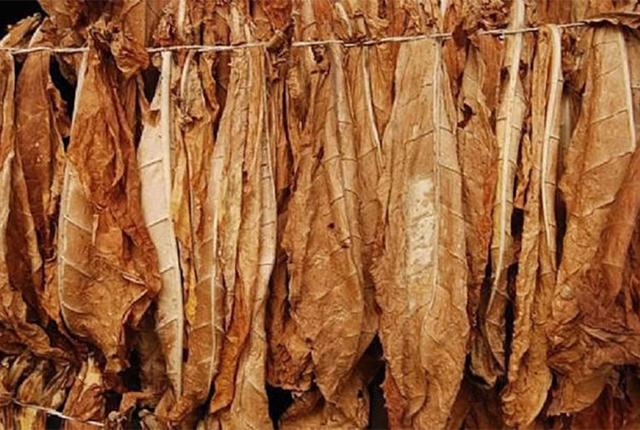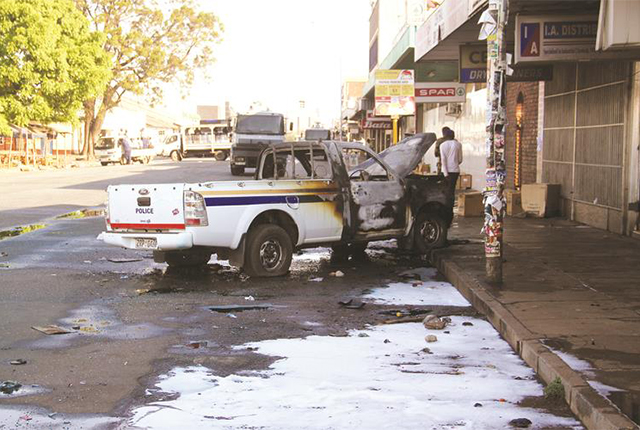Why should tobacco be any different?

Martin Kadzere : Senior Business Reporter
TOBACCO farming stands out as one of the biggest empowerment stories not just in the history of Zimbabwe but at a global level. Prior to the land reform programme, tobacco farming was a preserve of large scale commercial farmers with negligible numbers of blacks. Smallholder black farmers were discouraged from producing tobacco because it was said to be too technically challenging. And when they delivered their little crop to the floors it was sold in what was then termed the “Chitungwiza” sale at punitive prices.Clearly, white farmers did not want to share this lucrative cake with the indigenous majority.
Prior to land reform, about 2 000 large scale commercial farmers produced 200 million kilograms, an average of 200 tonnes per farmer. But with the land reform, the number of farmers has increased to about 70 000, with production levels stabilising at about 200 million kg, an average of three tonnes per farmer.
This represents a clear transfer of wealth from the elitist large scale farmers to a broader grower base.
Rural communities have been economically transformed, driven by good profits the farmers are enjoying.
However, the successful empowerment of the sector at primary level has not translated to gains further down the value chain, where superior returns are being made by leaf merchants and cigarette manufacturer.
By way of an illustration, the top price for tobacco on auction floors is $4,99 per kg. The same kg retailing in developed country markets sells for $500 after blending with lower cost tobacco from other markets.
The bulk of tobacco produced in Zimbabwe is exported in green (semi-processed) form mainly by big merchants. With one or two exceptions, indigenous merchants have failed to penetrate this market due to formidable entry barriers in the form of access to low cost funding, long working capital cycles, and access to markets in the exclusive old boys club of global tobacco as well as lack of factory processing capacity.
As a result, indigenous merchants have been condemned to trading as speculators on the auction floors, surrogate buying on behalf of the big merchants as well as management of contract growing schemes on behalf of the large tobacco merchants.
Returns from all these activities are a pittance in relation to the returns that indigenous players could make in export markets as leaf merchants or cigarette manufacturers.
Effectively the indigenous tobacco merchant does not have a seat at the main table and is surviving on the crumbs dropped by the larger merchants.
Some analysts believe while tobacco farming provides handsome returns especially in relation to other crops, the black farmer is only participating in a very a minimum level of the value chain.
Indeed, celebrating the success of tobacco farming equates to celebrating the tail of the elephant while big tobacco is left to transfer handsome returns out of the country.
This is a poignant example of the importance of the value addition pillar in Zim-Asset.
It is no secret that the economic development of nations is initially driven by primary production and thereafter by the acquisition of technological competencies for the creation of more complex products further down the value chain and finally by becoming knowledge economies, which outsource production to poorer countries.
There is need for policymakers to formulate an effective indigenisation roadmap for the tobacco sector to address constraints relating to funding, markets and processing facilities.
The strategy could incorporate an aggressive “Look East” agenda, a focus on niche markets where local merchants can benefit from deals at a government to government level as well as leveraging regulatory power in the creation of tobacco processing facilities.
The average price for tobacco sold at the auction floors is about $3 per kg, which becomes around $5 after 60 percent value addition from factory processing. Export price at between $5 and $10 per kg translates to only 2 percent of the tobacco value chain.
With most tobacco being sold through agent companies linked to the large local merchants, it is clear that huge value leakage occurs through transfer pricing.
It is not possible to prescribe an export price for tobacco in view of the multiplicity of factors which determine price and quality.
Indigenous tobacco merchants are frequently taken to task for trading as speculators particular in the exploitation of the arbitrage opportunity between auction tobacco and contract tobacco.
Two questions need to be addressed here. Firstly why should the same grade of tobacco be subject to two different price lists depending on whether it is on auction or contract? It is interesting that pricing on auction is lower despite the existence of competition while contract schemes offer higher pricing in the absence of any competition, contrary to the principles of economics.
Clearly contract price lists are designed to protect the mostly white large scale commercial farmer while auction pricing penalises the smallholder farmer’s success under land reform.
It is the big merchants themselves who create this arbitrage opportunity through differential price lists. Secondly, all major commodity, equities and derivative markets are driven by speculators who bring efficiency to markets. Why should tobacco be any different?











Comments